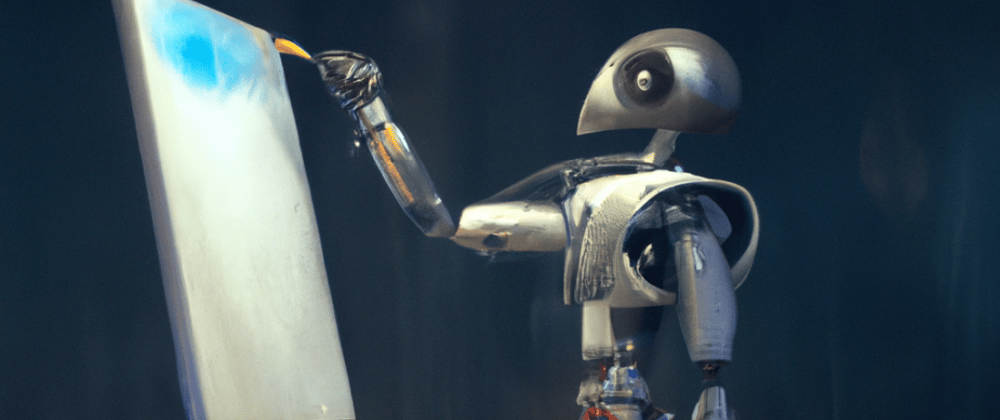(Cover made with DALL-E 2)
It is increasingly difficult to understand how AI work, neural networks, trained to imitate the human brain, sometimes seem not only to mirror our intelligence, but also our preferences and emotions.
Google joined the party
In the latest AI event, Google has announced some new AI tools, some highlights are: “Code as Policies” (AI that generates code autonomously), “Wordcraft” (Fiction Writer), “Initiative 1,000 Languages” (AI that will work with the thousand most spoken languages in the world). In addition, Imagen, the image generation system, which is our focus in this article.
Google has not made the system accessible to the general public, although Imagen generates comparable results - if not better - in quality to DALL-E 2 or Stable Diffusion.
Now, in the example below found on the Imagen website, notice something. This AI can write perfectly. This is a big step ahead of all the other AI's.
The results of Imagen AI speak for themselves and represent yet another major breakthrough in the fields of text-to-image generation and generative modeling in general. Imagen adds to the list of Diffusion Models’ outstanding accomplishments, which have swept the machine learning community off their feet over the past few years with a succession of spectacular outcomes.
Who owns the sheep?
Now, entering a more serious subject, on law and rights. If a robot dreams of an electronic sheep, who owns the sheep?
According to Ryan Meyer, Of Counsel at American law firm Dorsey & Whitney LLP, the answer is, well… no one. The law is yet to catch up with the advances in AI technology. Ryan is an intellectual property litigator who works across all areas of IP including patent, copyright, trademark, and trade secret law. He also has experience working in matters involving software, mechanical and electronic devices, networking technology, telecom technology, and others.
Highlighting Jason Allen’s AI-generated work, ‘Theatre D’opera Spatial’ - see the first part of this article series - as a personal favourite - Ryan says:
“The amazing thing to me is that, as a layperson, I cannot tell the difference between AI- and human-created artwork.”
This just shows how quickly the technology has developed.
It has even proven to be capable of solving Raven's Matrices - visual tests used to measure human intelligence - showing that DALL-E can express both geographical and temporal knowledge (an understanding of places, concepts and how they change over time.)
So once you’ve created your AI-generated masterpiece, what’s stopping you from claiming it as your own, using it commercially or preventing others from using it? Ryan says that AI-generated content raises many legal issues.
“The US Copyright Office has already refused to grant a copyright registration for AI-generated art because the current copyright law requires human authorship for copyright protection. That means that, under the current rules, AI-generated art has no owner.”
The owners of the AI technology itself may be the ones with cause for concern - potentially being at risk of copyright infringement lawsuits. He continues:
“AI cannot create art in a vacuum; instead, it usually reviews or even contains reproductions of other people’s artwork that it uses to create new artwork. That new artwork could be an unauthorized derivative, which is an infringement. If the AI also stores a reproduction of that artwork, that too is an infringement. Another issue is that, while artwork is generally in the domain of copyright law, computer technology necessary for AI-generated artwork might be protectible under patent law. We might start seeing patent law used in new ways to protect AIs and the methods they use for creating artwork.”
IP law varies from country to country, but Ryan explains that most nations are signatories to the Berne Convention for the Protection of Literary and Artistic Works, which establishes uniform copyright protection internationally. However, Ryan reiterates that in the US:
“Copyright law does not protect AI-generated artwork, so neither you nor the AI company has any rights in the image.”
A mix of copyrights, patents and trade secrets are used to protect an AI’s source code and the technology it needs to operate, but very few of the legal precedents were drafted with AI-generated art in mind.
“For a complicated, potentially controversial issue like this, we might have to wait several years for the laws to catch up with technology”
says Ryan.
He also says that the way in which AIs collect information can be a cause for concern, especially as much machine-learning software utilizes a database of images collated from other artists.
“If a person uses an AI to generate a mark, and that mark contains elements of another artist’s work, that person could be liable for copyright or trademark infringement. The mark might be an unauthorized reproduction or derivative of a copyrighted work, or it might be so similar to someone else’s trademark that it would create a substantial likelihood of confusion.”
What about the Future?
Although it still brings many problems and controversies, just like any innovative invention, the text-to-image AI are here to stay. They should not be feared nor hated, but be used as a tool to assist the artists, just as nowadays exist softwares that enables you to do things that would be impossible only with paper and pen.
The creation of prompts is complicated and also needs some degree of artistic knowledge. In the future we may find events only for generated images.
The euphoria, anger and fear that have settled in the artistic community because of this new technology are typical of happening whenever a great invention gains fame, and can be appeased once the most worrying issue, the copyright law, is resolved.








Top comments (0)